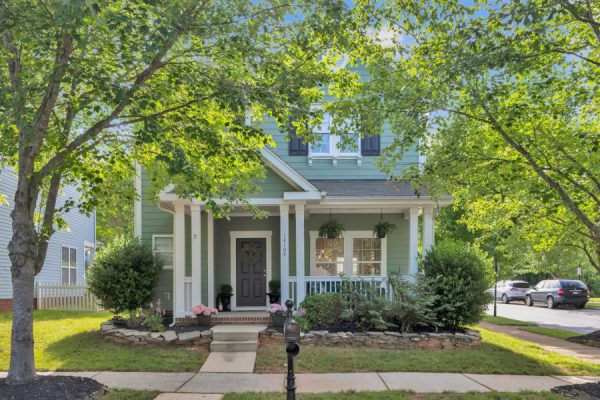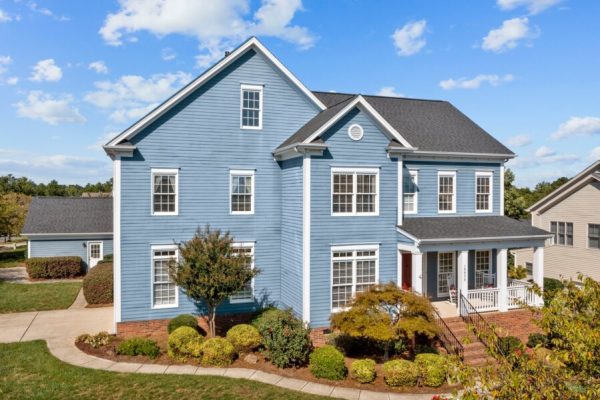Cotton Fields-turned Skyscrapers
Though the hardships of war touched most families, Charlotte came out of the Civil War stronger than ever. Troops had cut the railroad to Columbia, but it was quickly restored. African Americans, who comprised 40 percent of Mecklenburg population, were now free. Charlotte’s population doubled during the 1860s, hitting 4,473 in 1870.
Leaders in Charlotte and across the post-war South talked avidly of creating a New South. The region would no longer rely on slavery and farming; like the North, it would embrace factories and urbanization.
That New South spirit of reinvention still defines Charlotte. No wonder the city is home to Levine Museum of the New South, whose nationally award-winning exhibitions show the region’s reinventions, spanning cotton fields to factories and finance, the journey from slavery to segregation and, ultimately, the Civil rights movement.
Textile Times
By the 1880s, Charlotte sat astride the Southern Railway mainline (the “main street of the South”) from Atlanta, Georgia to Washington, D.C. Farmers from miles around brought cotton to the railroad platform Uptown, where today’s EpiCentre (aptly named!) bustles with activity. Local promoters began building textile factories, starting with the 1881 Charlotte Cotton Mill that still stands at Graham and 5th streets.
By the 1920s, this part of the Carolinas—from Greenville and Spartanburg in South Carolina to Winston-Salem and Durham in North Carolina—surpassed New England to become the nation’s top cotton manufacturing district. Charlotte blossomed as the trading city for the region. The city’s population soared from less than 20,000 residents at the turn of the century to more than 100,000 by 1940.
You can see that history today in Charlotte’s NoDa neighborhood, a cluster of former mill villages reborn as an eclectic arts district filled with pedestrian-friendly retail, nightlife, dining and music venues. Or look further to the now-suburban towns of Pineville, Cornelius, Kannapolis, Belmont, Mount Holly and Gastonia, where big brick mill buildings have been reimagined into restaurants, entertainment hubs, businesses and shops.
Cotton’s legacy lies behind other landscapes as well. The glass-roofed 1915 Latta Arcade and adjoining Brevard Court in Uptown—where employees of Center City businesses now flock to restaurants and retail during the lunch hour—housed offices of cotton brokers. Myers Park, with its gracious greenways and curving, oak-shaded streets added by renowned Boston, Massachusetts, landscape planner John Nolen, was laid out in the 1910s for mill owners, bankers and utility executives. And Lake Wylie in South Carolina began as a hydroelectric project of James Buchanan Duke, who sold power to textile companies. You’ll recognize the name in Duke Energy, one of the largest electric power companies in the U.S., which is headquartered in Charlotte. Duke is also the namesake of The Duke Mansion, one of the city’s most popular bed-and-breakfasts, venues and historic landmarks. Duke, having been at the helm of many of the mansion’s renovations, was its most famous owner.
Small Businesses-turned National Brands
Charlotte was never a one-industry town; its central location made it the Carolinas’ sales and distribution hub for all kinds of goods. The Belk family built the South’s premier department store chain; Belk’s flagship store is in Charlotte. On Central Avenue, Leon Levine opened the first Family Dollar discount store, which now operates nationwide. Across the street, W.T. Harris operated a food market that blossomed into the regional grocer Harris Teeter. Charlotte food salesman Philip L. Lance turned a raw peanuts deal gone awry into the ever-popular Lance crackers (now Snyder’s-Lance) brand. And in nearby Wilkesboro, North Carolina, a hometown hardware store grew into mega retailer now known as Lowe’s. Still, other notable locally born brands, like Cheerwine and Bojangles’ Famous Chicken n’ Biscuits, also came to fruition under the direction of area businessmen.
Campus Life
New South prosperity aided educational opportunities. Johnson C. Smith University (JCSU) was founded just west of Uptown immediately following the Civil War in an effort to train African-American “preachers and teachers.” In Myers Park, Queens College (now Queen’s University of Charlotte), also started by Presbyterians, was established as a school for educated, young white women. North of the city, elite Davidson College opened its doors to provide a liberal arts education to young white men. These specialized colleges were joined by what is now the University of North Carolina at Charlotte, launched by Bonnie Cone in 1946. The campus serves more than 28,000 students annually today as one of North Carolina’s major research universities.
A Music Mecca
Colleges possessed no monopoly on culture. WBT, the first radio station licensed in the South, attracted a remarkable array of country music and gospel performers who sang live over the airwaves. RCA Victor and other record companies visited often. A South Tryon sidewalk plaque marks where Bill Monroe, the Father of bluegrass music, cut his first discs in 1936.During the late 1930s, more records were made here than in Nashville, Tennessee.



